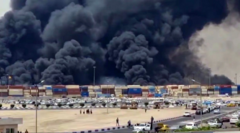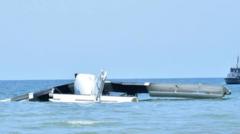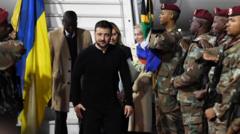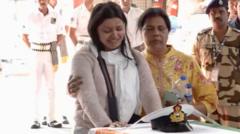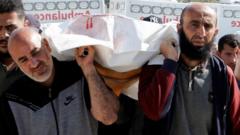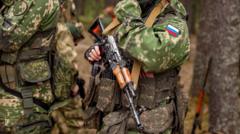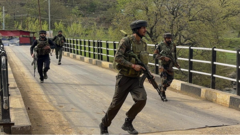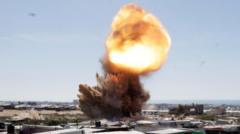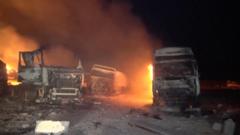The recent tragic event in Yemen highlights ongoing tensions and misunderstandings between conflicting parties in the region.
U.S. Officials Clarify Houthi Responsibility for Fatal Yemen Blast

U.S. Officials Clarify Houthi Responsibility for Fatal Yemen Blast
The U.S. asserts that a missile fired by Houthi forces, not an airstrike, caused a deadly explosion in Sana.
On April 24, 2025, U.S. Central Command responded to claims that a deadly explosion in Yemen’s capital was the result of an American airstrike, asserting that the blast was caused by a Houthi missile. The explosion occurred on a Sunday near a UNESCO world heritage site, killing 12 individuals and injuring 30 more, according to a local health ministry statement from the Houthi-led government.
Dave Eastburn, a spokesperson for U.S. Central Command, confirmed that while the casualty figures mentioned by local health officials were likely accurate, the damage did not result from a U.S. military operation. He explained that the nearest American airstrike took place more than three miles away from the blast site, which is located adjacent to Sana's historic Old City.
The Pentagon's conclusion was partly based on evidence from local reports and video evidence showing Arabic inscriptions on fragments of the missile purportedly used in the attack. However, critics noted that initial analyses, including a review by The New York Times, found discrepancies in the locations depicted in social media posts and videos.
Mohammed al-Bukhaiti, a member of the Houthis' Politburo, strongly refuted the U.S. assertion, characterizing it as an attempt to diminish the Houthis' credibility. He reiterated the group's claims that American strikes had previously targeted civilian areas, resulting in widespread loss of life. The continuing cycle of blame and confusion serves as a stark reminder of the complexities and dangers faced by civilians in war-torn Yemen.
Dave Eastburn, a spokesperson for U.S. Central Command, confirmed that while the casualty figures mentioned by local health officials were likely accurate, the damage did not result from a U.S. military operation. He explained that the nearest American airstrike took place more than three miles away from the blast site, which is located adjacent to Sana's historic Old City.
The Pentagon's conclusion was partly based on evidence from local reports and video evidence showing Arabic inscriptions on fragments of the missile purportedly used in the attack. However, critics noted that initial analyses, including a review by The New York Times, found discrepancies in the locations depicted in social media posts and videos.
Mohammed al-Bukhaiti, a member of the Houthis' Politburo, strongly refuted the U.S. assertion, characterizing it as an attempt to diminish the Houthis' credibility. He reiterated the group's claims that American strikes had previously targeted civilian areas, resulting in widespread loss of life. The continuing cycle of blame and confusion serves as a stark reminder of the complexities and dangers faced by civilians in war-torn Yemen.


